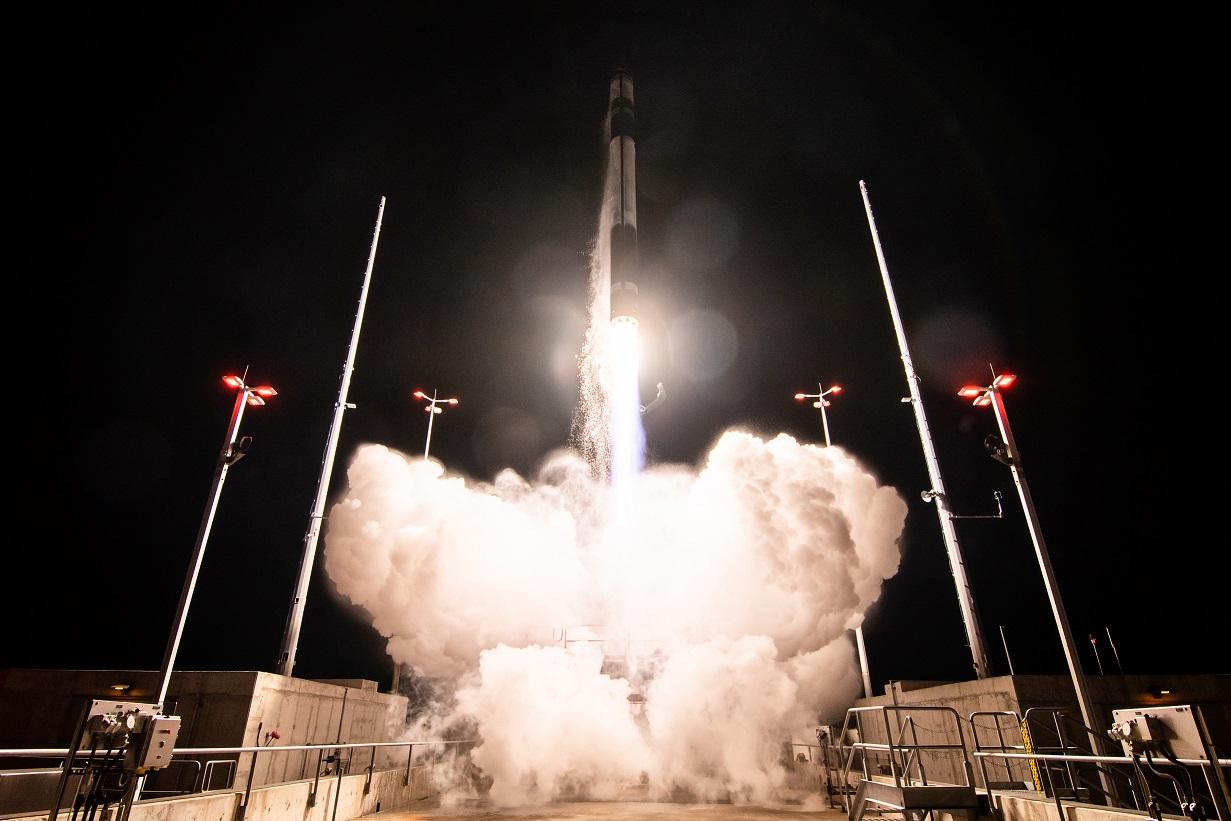
Rocket Lab's first launch from the Mid-Atlantic Regional Spaceport at NASA’s Wallops Island Flight Facility took place Jan. 24.
Rocket Lab successfully launched an Electron rocket and deployed three Hawkeye 360 satellites into orbit on Jan. 24 from Launch Complex 2 within the Mid-Atlantic Regional Spaceport at NASA’s Wallops Island Flight Facility.
The “Virginia is for Launch Lovers” mission was groundbreaking for a number of reasons. It was Rocket Lab’s first from the Wallops Island facility, opening a new venue for the Electron rocket. With it, and two launch pads in New Zealand, the company predicts it has up to 132 launch opportunities per year. The company can offer customers the ability to launch in the southern and northern hemispheres.
The launch also marked a new beginning for the Virginia spaceport, which plans to continue expanding its ability to launch rockets. And it demonstrated Rocket Lab’s use of Autonomous Flight Termination System software, recently certified for use by the FAA.
“This partnership creates long-term positive economic impact across the region and cements the Mid-Atlantic Regional Spaceport as a national asset for assured access to space,” Virginia Space CEO and Executive Director Ted Mercer said.
Hawkeye 360 also sees this Cluster 6 launch as a major milestone, having put 15 satellites on orbit in two years. The company's constellation, which detects radio frequency signals, is increasing coverage of regions along the equator. This is its first collaboration with Rocket Lab. The operator has signed on for two additional Electron launches in New Zealand through 2024.
“We selected Rocket Lab because of the flexibility it enables for us to place the satellites into an orbit tailored to benefit our customers,” Hawkeye 360 CEO John Serafini said. “Deploying our satellites on Rocket Lab’s inaugural launch is a giant leap in Virginia’s flourishing space economy.”

Comments
Try their slider image of the middle east, for a sense of how many RF emitters they can see in key bands.